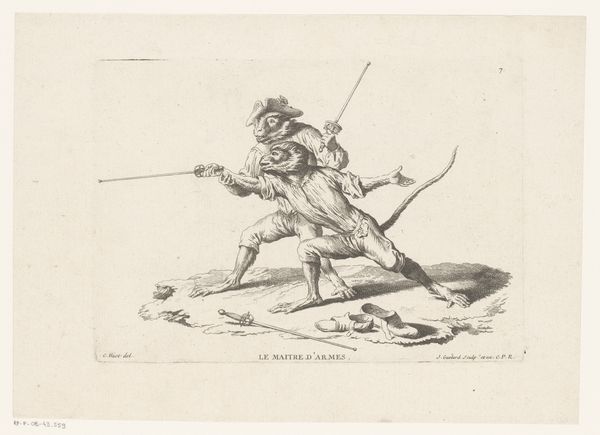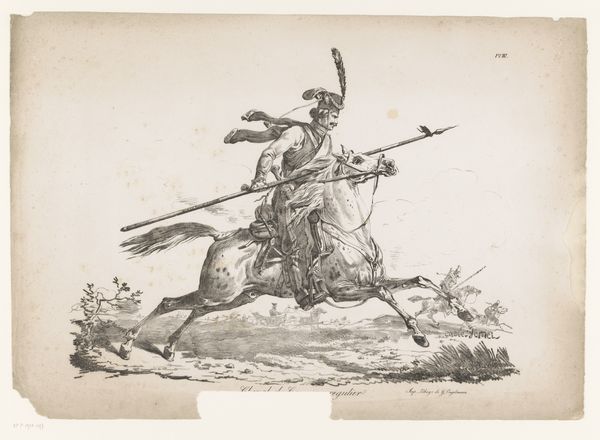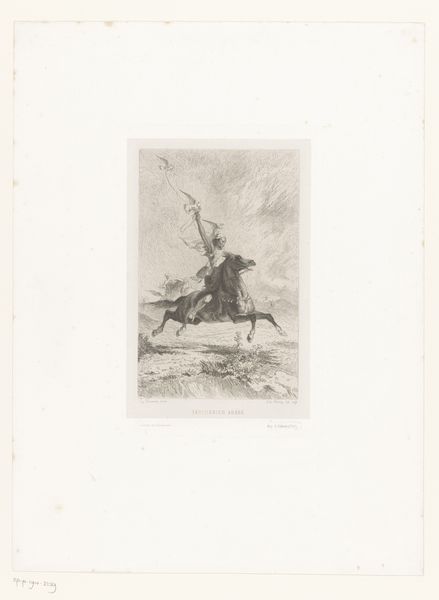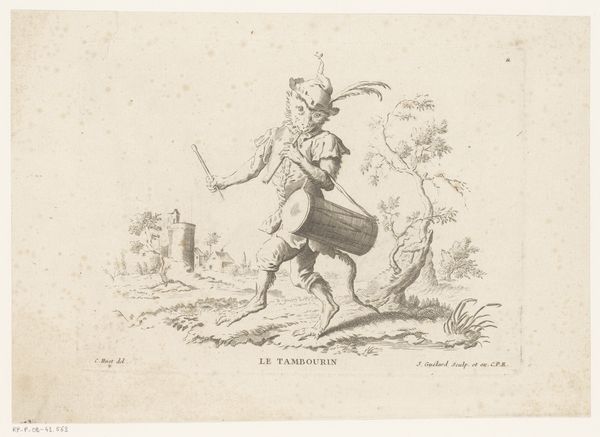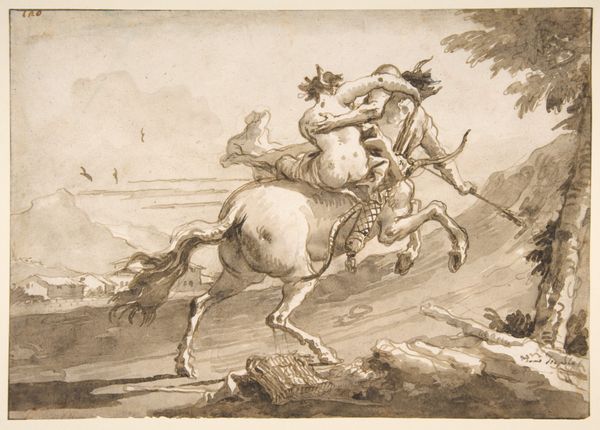
drawing, graphite
#
drawing
#
pencil sketch
#
landscape
#
romanticism
#
graphite
#
genre-painting
#
history-painting
Dimensions: height 300 mm, width 437 mm
Copyright: Rijks Museum: Open Domain
Curator: We’re now looking at "Lansier te paard," a pencil and graphite drawing made between 1835 and 1839, currently held in the Rijksmuseum collection. Editor: My first thought is how the light catches the horse’s flank, creating this remarkable sense of forward motion against the muted landscape. It is so simple but dynamic! Curator: Yes, there’s a Romantic dynamism to it. Consider how Salomon de Visser’s work intersects with the social and political realities of the time. Genre and history painting allowed for exploration of identity and class. What does the lancer represent? Is this image celebratory, or does it hold a critical edge towards military power structures? Editor: Structurally, observe how the angle of the lancer’s weapon mirrors the roofline of the building in the background. This parallel generates a visual harmony, suggesting a deeper connection between the military figure and the domestic space he may be charged with protecting. Or menacing, depending on the viewer's social location. Curator: Precisely. Understanding that historical positioning, we need to ask whose stories are told, and how. Who is the lancer? From which social strata does he come? His class would dictate how that weapon in his hand functions—protection, oppression, and so forth. The very absence of background—its sparseness—highlights the limited opportunities of the working class from which this lancer originates, or the open opportunities for plunder through this armed service. Editor: The drawing's brilliance comes through its balance and clean lines. If we think of semiotics, the lancer, his horse, even that simple structure, work as signs that de Visser arranges to speak about power, movement, and solidity through symbolic expression. It all combines into a powerful feeling. Curator: Indeed, power, visually represented, but filtered through the lens of societal inequality. It makes you consider not only who held the power but who was affected by it, how the artistic depiction either reinforces or questions the status quo. Editor: Studying this work has heightened my understanding of formal relations. I appreciate de Visser’s expert arrangement of simple elements. Curator: And for me, it reinforces how historical context is never separate from artistic expression, each enriching our understanding of the other.
Comments
No comments
Be the first to comment and join the conversation on the ultimate creative platform.
